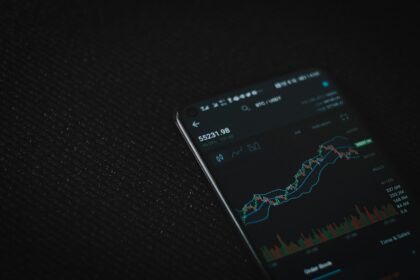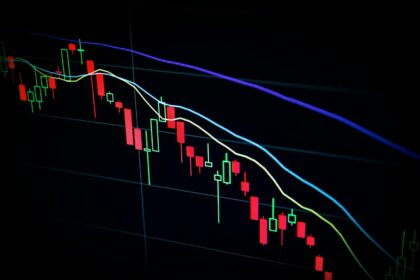When placing a transaction on an exchange, deciding whether to execute instantly or wait for a specific price can dramatically impact your results. An instruction aimed at immediate fulfillment offers speed but may sacrifice the exact entry or exit value. Conversely, setting conditions to trade only at a desired rate provides control over cost but risks delay or partial completion.
Instructions that trigger right away prioritize swift execution, making them suitable for capturing current market momentum or responding quickly to shifts. On the other side, commands that activate once the asset hits a predetermined level allow traders to manage risk and optimize profit margins by targeting favorable prices.
Knowing how these different instructions behave in practice helps craft strategies aligned with your goals. For example, if timing is critical and you accept paying a premium for certainty, instant execution commands are preferable. If precision in price outweighs urgency, conditional trades offer better alignment with planned outcomes.
The operational mechanics of these approaches on trading platforms affect order filling speed and likelihood of completion. Familiarity with their nuances enables confident decision-making and smoother navigation through various market scenarios encountered during active trading sessions.
Understanding Crypto Order Types: Market vs Limit
For immediate transaction needs, selecting a market instruction guarantees swift execution at the best available price on an exchange. This method bypasses waiting times by matching with current offers, making it ideal when speed outweighs price precision. Traders prioritizing certainty of trade completion often utilize this approach, especially during volatile sessions where prices shift rapidly.
Conversely, specifying a limit instruction allows setting a preferred price point for acquiring or disposing of assets. This triggers execution only when the marketplace reaches the designated valuation, providing control over entry or exit levels but sacrificing immediacy. Such strategies suit those aiming to optimize cost efficiency and avoid slippage in environments with fluctuating valuations.
Execution Mechanisms and Practical Implications
Exchanges process these two instruction categories distinctly. A market request consumes liquidity from existing bids or asks instantly, resulting in near-immediate fulfillment but potentially variable pricing due to order book depth. For instance, submitting a buy request at market may fill multiple sell offers at incrementally increasing prices if volume exceeds the lowest ask.
Limit instructions contribute liquidity instead by resting within the order book until matched by opposing requests meeting specified criteria. This can lead to partial fills or no execution if conditions remain unmet, as illustrated when placing a sell limit above current buying levels–trade occurs solely once buyers accept that premium.
- Market approach: fast execution; possible price slippage during high volatility;
- Limit approach: controlled pricing; potential delays or incomplete fills;
- Hybrid tactics: combining both methods can balance speed and cost efficiency depending on trading objectives.
A practical case study involves using limit requests during trending markets to capitalize on pullbacks without entering at unfavorable highs. Alternatively, during significant news events triggering sudden moves, market transactions enable prompt position adjustments despite less predictable costs.
In summary, mastering these fundamental procedures enhances decision-making on exchanges by aligning execution style with personal risk tolerance and strategy requirements. Familiarity with their technical distinctions empowers participants to navigate trading platforms more effectively while managing expectations regarding timing and pricing outcomes.
How Market Orders Execute Trades
To initiate a transaction through an immediate purchase or sale on an exchange, traders rely on market orders that prioritize prompt execution over price control. These instructions instruct the trading platform to fill the request at the best available price in the order book, ensuring rapid completion even during high volatility. Unlike limit orders that specify a maximum or minimum acceptable price, this approach guarantees trade fulfillment but may result in slippage depending on liquidity.
The process behind these transactions involves matching buy and sell interests from various participants within the exchange’s order book. When such a directive is submitted, it consumes existing offers starting with those closest to the current market rate, moving outward until the entire requested volume is executed. This mechanism leverages real-time data aggregation across multiple users, enabling swift conversion of assets without waiting for specific pricing conditions.
Execution Dynamics and Practical Implications
Traders choosing this route benefit from certainty in timing but should remain aware of potential price fluctuations during execution. For instance, if a large sell instruction arrives in a thinly traded market, it might trigger multiple fills at progressively lower prices due to insufficient opposing bids at the initial levels. This phenomenon demonstrates how order size relative to available liquidity directly impacts cost efficiency and final outcomes.
An illustrative case occurred on a notable exchange where executing a substantial buy request at once caused noticeable upward pressure on prices, consuming lower-priced asks rapidly and pushing subsequent fills higher. Such events highlight how instantaneous interaction with multiple layers of supply can produce significant deviations from expected averages when compared to predefined threshold instructions like limit entries.
In contrast, placing instructions with predetermined pricing caps allows traders to exert more control over their entry points but introduces uncertainty regarding if or when trades will occur. Market takers using immediate-execution commands accept variable rates as part of prioritizing speed–an essential factor during fast-moving sessions or when seizing fleeting arbitrage opportunities across different platforms.
Overall, familiarity with this execution mode empowers participants to tailor strategies according to objectives: leveraging immediacy for timely entry or exit versus precision through conditional placements. Understanding how exchanges handle these requests internally fosters better anticipation of trading costs and helps optimize decision-making aligned with portfolio goals and risk management frameworks.
Setting and Using Limit Orders
When placing a specified purchase or sale instruction on an exchange, setting a predetermined price level ensures that your transaction will only be executed at that rate or better. This approach grants more control over the entry and exit points during trading, allowing users to avoid unfavorable price slippage common in immediate execution scenarios. For instance, if you aim to buy Bitcoin but want to pay no more than $30,000, inputting this value as your threshold lets the platform hold the instruction until market conditions align.
Different from instant transactions triggered by current prices, these preset instructions remain open until matched with a counterparty willing to meet the exact criteria. However, this means execution is not guaranteed within a specific timeframe–market volatility can delay fulfillment or leave orders partially filled. Traders often combine this method with real-time monitoring tools or automated alerts from the exchange to optimize timing and react promptly when their conditions are met.
Technical Considerations and Practical Examples
Execution of such instructions relies heavily on order book dynamics and liquidity depth on any given platform. High liquidity pairs like ETH/USDT generally experience faster matches for set values due to frequent bid-ask overlaps. Conversely, less liquid assets might see prolonged waiting times or partial fills distributed across multiple counterparts. For example:
- A trader places an instruction to sell Ethereum at $2,500; if the highest ongoing bid is below this figure, the system waits until demand reaches the specified level.
- If only part of the volume matches available bids–say half–the remaining quantity stays active until fully executed or canceled.
This mechanism allows strategic positioning without committing immediately at prevailing prices, which can be beneficial during volatile swings or when targeting precise profit margins.
Step-by-Step Application on Exchanges
To use this functionality effectively, start by selecting the desired trading pair on your chosen platform. Then:
- Navigate to the pricing input area and specify your target amount per unit.
- Indicate total volume intended for purchase or sale.
- Review potential fees associated with pending transactions versus immediate trades.
- Confirm and submit; monitor status within your portfolio dashboard under open instructions.
This process empowers traders of all experience levels with precision placement options beyond simple immediate buys or sells. Regularly reviewing open entries helps adjust strategies based on shifting market trends.
Balancing Benefits and Risks in Trading Execution
The advantage lies in avoiding unexpected price deterioration while maintaining position discipline aligned with personal risk tolerance. Yet, there is exposure to missed opportunities if prices move rapidly away from preset thresholds without triggering an execution event. Additionally, some exchanges may cancel stale instructions automatically after set periods or during maintenance windows–keeping track mitigates surprises.
A practical scenario includes placing a sell request slightly above current quotations aiming for incremental gains without rushing into sales amid brief dips. Over time, combining these tactical placements with analytics tools enhances decision-making confidence while navigating complex trading environments efficiently.
Price Slippage Impact Comparison
To minimize adverse effects on trade outcomes, it is advisable to carefully select execution methods that align with liquidity and volatility conditions. Instantaneous fulfillment strategies generally result in higher slippage, particularly during periods of rapid price movement or low order book depth on trading venues.
Execution based on pre-set thresholds allows traders to control price deviation more effectively, though it may lead to partial or delayed fills depending on market dynamics. Recognizing how different transaction approaches influence slippage is fundamental for optimizing asset acquisition costs and managing risk exposure.
Analyzing Price Deviation Across Execution Strategies
Immediate fill transactions typically trigger the highest slippage due to the necessity of accepting the best available prices, which may shift rapidly as volumes are absorbed. For example, executing a large transaction on a less liquid exchange can cause significant price impact, pushing subsequent fills into less favorable levels of the order book.
Conversely, conditional executions that specify maximum acceptable price variance enable traders to avoid unfavorable fills but might fail if the market moves away from specified limits. This trade-off between certainty and cost control makes execution strategy selection context-dependent.
Volume-weighted average price (VWAP) algorithms offer an alternative by distributing trades over time, reducing immediate market impact and smoothing slippage metrics. Studies show such tactics can reduce average deviation by up to 30% compared to single-instant orders in volatile environments.
A practical case study involving a mid-cap digital asset demonstrated that using restricted pricing mechanisms reduced average slippage from approximately 2% to under 0.8%. However, this came at the cost of increased execution time and occasional partial fills during high volatility phases.
The choice between immediate acceptance of current prices or waiting for target conditions relates directly to trading priorities–whether speed or precision holds greater value for portfolio management objectives. Educating oneself about venue-specific liquidity profiles and historical spread behavior also enhances decision-making accuracy regarding potential slippage impacts.
When to Choose Market Orders
If immediate execution is your priority, selecting a transaction type that guarantees rapid completion on the exchange is advisable. These instructions execute instantly at the best available price, making them ideal for entering or exiting positions without delay. This approach suits volatile trading environments where waiting might cause missed opportunities due to swift price fluctuations.
Such transactions bypass setting a specific threshold price and instead accept the current quotation from the order book. This mechanism ensures prompt fulfillment but may result in paying slightly higher or receiving slightly lower prices compared to predetermined levels. Traders should weigh speed against potential cost differences when opting for this execution method.
Technical Advantages of Immediate Execution in Trading
One key benefit of instant trade submissions lies in their ability to capture market momentum effectively. For example, during high-frequency trading sessions or breaking news events impacting asset value, delays could erode profits or amplify losses. Utilizing an instruction type focused on swift processing aligns with strategies requiring quick entry or exit without negotiation over price limits.
On centralized platforms, these commands interact directly with live liquidity pools, consuming existing offers until the specified amount completes. This contrasts with waiting for passive bids or asks that meet fixed criteria set by another instruction variant designed to limit acceptable pricing ranges. Understanding this interaction helps traders decide when prioritizing execution time over exact pricing makes sense.
Beginners might find it helpful to consider real-world scenarios such as purchasing cryptocurrency during sudden bullish spikes. Opting for immediate fulfillment allows acquiring tokens before prices rise further. Conversely, those aiming for cost control might prefer strategies involving preset thresholds to avoid unfavorable price slippage inherent in fast-fill mechanisms.
Risks of Limit Order Failures: A Technical Overview
To mitigate execution risks associated with pending price-specific instructions, traders should carefully assess the volatility and liquidity of their chosen platform. Unfilled requests often result from insufficient market depth or rapid price fluctuations, which can leave assets stranded or trades incomplete.
Different categories of trade submissions behave uniquely across various venues. For example, resting offers on decentralized platforms might fail due to network congestion or slippage beyond the specified threshold, while centralized exchanges may cancel orders when price conditions lapse. Recognizing these nuances helps improve strategic placement and timing.
Key Technical Considerations and Future Outlook
- Order Execution Probability: The likelihood that a conditional trade triggers depends heavily on matching counterparty interest within the selected pricing window. Traders should monitor order book depth and recent transaction velocity to estimate fill chances.
- Exchange Mechanism Variability: Different trading systems implement queuing and prioritization differently–some use time-priority models; others incorporate pro-rata allocation–affecting how pending requests convert into completed deals.
- Impact of Latency: Network delays between submission and acknowledgment can cause missed opportunities, especially during sudden market swings. Employing low-latency connections and APIs reduces such exposure.
- Slippage and Partial Fills: Price gaps between intended execution points and actual matches may lead to partial fulfillment or abandoned transactions, which demands adaptive strategies like dynamic adjustment of entry parameters.
A forward-looking perspective suggests that enhancements in smart contract capabilities and algorithmic routing will increasingly optimize conditional trade fulfillment. Cross-exchange liquidity aggregation protocols aim to reduce fragmentation that currently undermines precise pricing executions.
This growing sophistication will enable participants–from novices establishing foundational positions to institutional actors optimizing complex portfolios–to better harness price-contingent mechanisms with reduced uncertainty. Continuous education about platform-specific behaviors remains essential as infrastructure evolves toward seamless integration of diverse trade instruction methods.





